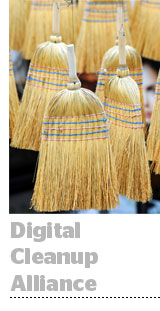
The destructive dreck on social platforms has brought the advertising industry to a breaking point.
And so top brands, media agencies, industry associations and the platforms themselves are banding together to form the Global Alliance For Responsible Media. The organization, which launched Tuesday, will focus on making media sustainable and a force for good in society – rather than a force for junk or worse. The first meeting will take place at the Cannes Lions festival.
Unilever, Mars and Diageo led the formation of the alliance and helped recruit additional founding members.
The industry is taking this task upon itself, because current approaches to brand safety have done little to stop the proliferation of harmful content, said Unilever EVP of global media Luis Di Como.
Fake news and content that promotes terrorism or sexual exploitation, bullying, hate speech and the sale of counterfeit or illegal goods is on the rise.
“It’s not safe for kids, it’s not safe for society, it’s not creating a positive impact,” Di Como said.
The alliance’s first order of business is to come up with a unified list of objectives that will minimize content that is “endangering the public as well as brand safety,” said John Montgomery, global EVP of brand safety for GroupM. The rules will be transparent and published, and “our intention is to move as quickly as we can,” he said.
The alliance will not advise members on where to spend – or pull – their advertising dollars, but rather work toward overall solutions. “This alliance is not about investment decisions,” Di Como said.
But by creating a common agenda, the alliance hopes to accomplish what members have not been able to do individually.
“There are so many challenges to be addressed [that] it takes a village to change this,” Di Como said.
The formation of the alliance also signals a shift in how advertisers address brand safety concerns with platforms toward a more collaborative approach.
Until now, brands would go individually to social platforms to request the removal of harmful content or to demand improvements on the brand safety front. Sometimes, brands went so far as to pull advertising dollars and boycott platforms over brand safety issues. Now, platforms get a seat at the table, which is “critical,” said Unilever’s Di Como.
Google, YouTube, Facebook and Twitter are among the member platforms at launch.
The current “splintered” approach sends mixed messages to the platforms, GroupM’s Montgomery said. A unified approach will give them clearer direction and require more accountable communication back to the overall group.
When the alliance meets to discuss objectives, it will likely build on existing efforts from member brands and industry organizations. For example, Unilever created a digital Responsibility Framework in 2018 that lays out its approach to spending on platforms, content and infrastructure.
Elements of Unilever’s framework could serve as inspiration for the group, as could other frameworks from alliance members.
“We are not starting from scratch,” Di Como said.
The alliance could also potentially encourage the sharing of AI tools that flag brand safety risks, Montgomery said. He would like the platforms to share their brand safety-related technology, as well.
“If we can harness the talents on all three platforms to improve AI identification, we could create an Amber Alert-type system,” Montgomery said. “If something like the New Zealand shooting were to happen again, everyone would identify it immediately and block it.”
By next year, Montgomery hopes that there will be far fewer examples of brand safety disasters in the headlines and a marked decrease in harmful content being spread through a platform.
“[It’s] a house of horrors every time you open the newspaper – there is something wrong somewhere,” Montgomery said. “Our clients are thinking about media sustainability. How do we make sure that we are not just limiting risk, but improving the integrity and trust in media overall?”
This post was syndicated from Ad Exchanger.


More Stories
Two-Year turn for NZ Fashion Week
Meta Brings AI to Reels, Matches Creators With Brands at NewFronts
Gannett’s Digital Ad Business Gets A Boost From Non-News Partnerships